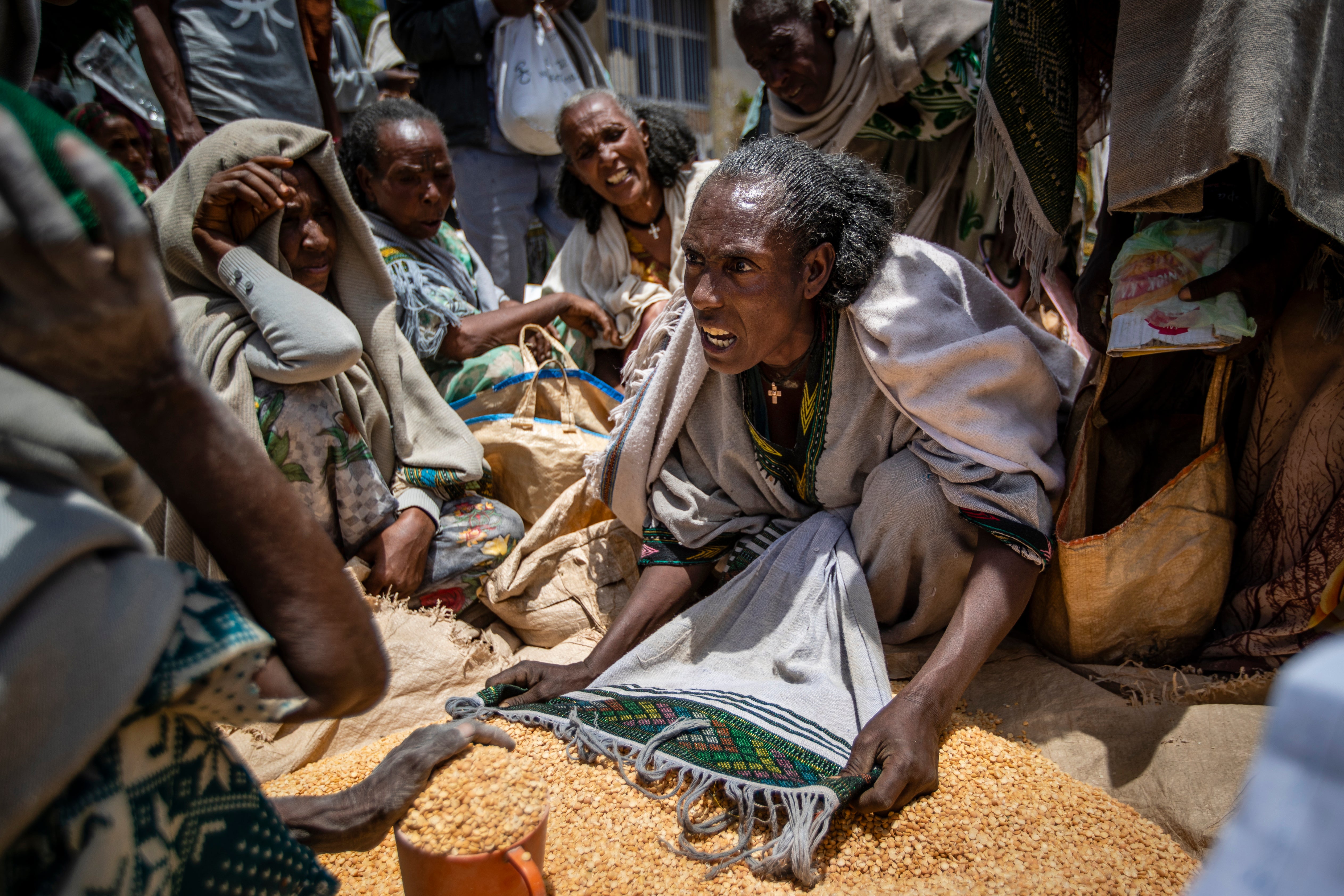2021 Notebook: The war in Ethiopia is 2021's hidden conflict
A war that erupted in November 2020 between Ethiopian forces and fighters from the country’s Tigray region has killed tens of thousands of people

THE BACKGROUND: Tens of thousands of people have been killed in a war that erupted in November 2020 between Ethiopian forces and fighters from the country's Tigray region, who dominated the national government before Nobel Peace Prize-winning Prime Minister Abiy Ahmed took office in 2018. The war threatens to fracture one of the world's most populous nations, with the fate of some 110 million people at stake.
Some of Tigray's 6 million people have begun starving to death under a months-long government blockade. Thousands of ethnic Tigrayans have been detained or forcibly expelled in an atmosphere stoked by hate speech from some senior officials, to the alarm of human rights groups. Last month, the government declared a state of emergency as Tigray fighters moved closer to the capital, Addis Ababa, leaving a growing number of abuses against ethnic Amhara in their wake. The Tigray forces say they are fighting to lift the blockade on their people, but they also want Abiy out.
The United States and others have told their citizens to leave, while Abiy surprised the world by saying he would lead the war from the battlefront.
Here, AP's East Africa correspondent reflects on the story and the challenges ahead.
___
CARA ANNA, Nairobi, Kenya:
A veteran AP colleague says Ethiopia is the most difficult war he’s ever covered. I think it’s because Ethiopia’s government has tried to keep the conflict hidden from the eyes of the world. Much of the fighting has been in the northern Tigray region, which has been sealed off. No internet. Almost no phone service. One small window of access for journalists several months ago.
Even as the war spread into Ethiopia’s neighboring Amhara and Afar regions, access remains very limited. How many tens of thousands of people have died? How many women and girls have been raped by Ethiopian forces and their allies, or by Tigray fighters? How many people beyond the reach of aid are starving to death or dying from lack of medicines? How many thousands of ethnic Tigrayans have been detained? We have little idea.
The government of a Nobel Peace Prize winner appears to be targeting an ethnic minority, and his peace deal with neighboring Eritrea for which he was awarded the Nobel, turned into a pact for war in Tigray. But many Ethiopians support the fight, blaming the Tigray leaders for nearly three decades of repressive rule.
What has driven my reporting, what I still don't understand, is how civilians on all sides, including children, can be punished for sharing the same ethnicity — not even the same politics, at times — as the combatants. Now, as all able Ethiopians are being called and in some cases forced to fight, the pain of war is spreading well beyond the areas of active conflict.
At the end of 2018, the year Abiy became prime minister and announced dramatic political reforms, Ethiopia’s government was praised for no longer having any journalists behind bars. That has changed as those reforms have crumbled. Journalists have been threatened, assaulted and detained simply for trying to cover the war. A video freelancer accredited to the AP is now among those detained. Some journalists have been forced to leave the country. Others, like me, have never been allowed into Ethiopia because our stories have exposed atrocities or government lies, or both.
The government for months said soldiers from Eritrea, bitter enemies of the Tigray leaders, weren’t inside Tigray. The government said no massacre of Tigray civilians had occurred in the holy city of Axum. The prime minister himself said there was no hunger in Tigray. Meanwhile, the Tigray forces said they were not killing civilians. The AP showed all these statements to be false, despite the many obstacles to reporting.
What more is there to uncover? 2022 will show us. I hope journalists will be allowed into Tigray and other areas to tell the story of Ethiopia’s conflict safely and without reprisals so the world can see and understand what's happening.
___
For a full overview of the events that shaped 2021, “A Year That Changed Us: 12 Months in 150 Photos,” a collection of AP photos and journalists’ recollections, is available now: https://www.ap.org/books/a-year-that-changed-us